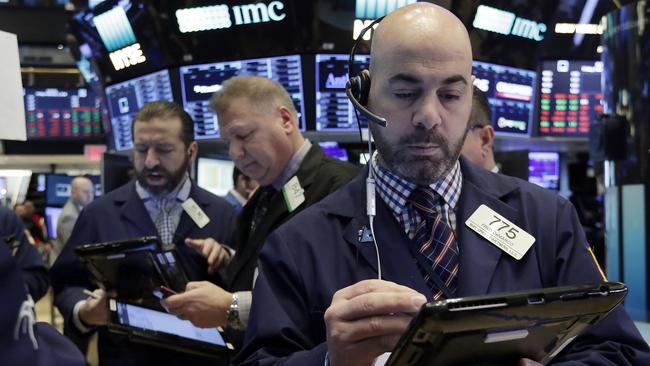Why the market cracked
Markets have a habit of being surprised by the obvious, usually because of those four dreaded words: ‘it’s different this time’.

US interest rates have been rising for two years now. The Fed funds rate (their equivalent of our RBA cash rate) has been raised five times since December 2015 and the 10-year bond yield — the key interest rate that’s set by the market — bottomed in July 2016 at 1.36 per cent and has been rising ever since.
After that first Fed rate hike, the S&P 500 corrected 10 per cent, but since then the sharemarket has been completely unconcerned about interest rates. The S&P 500 has put on 55 per cent since January 2016, with only a brief pause when the bond rate got up off the floor 18 months ago.
So, why the worry among share traders on Friday when the bond rate popped up from 2.72 per cent to 2.84 per cent in response to a better than expected employment report for January?
After all, jobs growth has been averaging around 200,000 a month — Friday’s number — for five years, so hardly a surprise.
It’s true that the wages growth number of 2.9 per cent for the year to January was the highest since 2009, but is that either surprising or worrying? Unemployment is 4.1 per cent and has been for more than a year — if wages didn’t start rising now then there would have to be a bonfire of economics textbooks and a rethink of the whole way the economy works.
Of course, markets have a habit of being surprised by the obvious, usually because of those four dreaded words: “It’s different this time”.
Thing are always different in some way and this time it’s technology, but as Mark Twain is supposed to have remarked, even though history doesn’t repeat, it often rhymes. Inflation following wage rises following a tight labour market is the basic economic rhyme.
One reason that the S&P 500 dropped 2.1 per cent and the Dow Jones 2.5 per cent on Friday, apart from the obvious fact that valuations have become stretched and a correction is due, might be that Friday saw the first outflow from ETFs of the year ($US3.7 billion).
Share prices around the world and especially in the US have been pushed higher by vast amounts of retail money flowing into exchange traded funds (ETFs) which now represent the lion’s share of equity investing.
ETF investors have had a wonderful ride over the past two years, with the global MSCI index rising at an annual rate of 23 per cent. It’s the sort of return a passive investor can only dream of, but they are edgy with altitude sickness now, looking for a reason to lock in those gains.
A mass withdrawal from ETFs is not something that has happened before, so how it might unfold is unpredictable. Would retail investors using ETFs for market exposure trade a big correction — that is, buy the dip — or lose faith and stay out, taking advantage of higher interest rates?
One day’s outflow is far from enough to draw any conclusions, but the popularity of ETFs for retail investors, combined with programmatic trading by professionals, has fundamentally changed the character of the financial markets. In that respect, at least, it really is different this time.
A couple of other things happened last week that would have sent shivers up the spines of investors: there was a changing of the guard at the Federal Reserve and a former Fed chair, 91-year-old Alan Greenspan, said he thought there was “a bubble in stocks and a bubble in bonds”.
Greenspan is famous for the line “irrational exuberance” that he came out with in December 1996. He was a bit early — the ‘dotcom bubble’ didn’t peak till March 2000 — but he was right enough.
As for the new Fed chair, Jay Powell, there has been a glib presumption that he is a Janet Yellen clone, which is ridiculous.
Not only is he nothing of the sort, he is on the record as opposing quantitative easing and super-stimulatory monetary policy.
Time will tell, and he may not be a full-on hawk, but with fiscal stimulus now confirmed and wages rising at 2.9 per cent, markets are right to start increasing the number of rate hikes they expect from the Powell Fed in 2018 and 2019.
We are in a cycle of rising interest rates. Markets have been too relaxed about it and pushed equity valuations in the US to extremes, and investor sentiment is also at a bullish extreme. This may be the correction we had to have to settle things down.
But bear markets only happen when there are recessions, and it’s very unlikely there will be one of those, either here, as discussed in this column on Saturday, or in the US.
Alan Kohler is the Publisher of The Constant Investor





